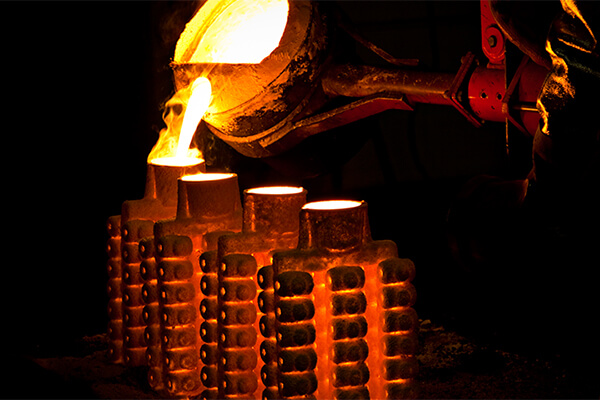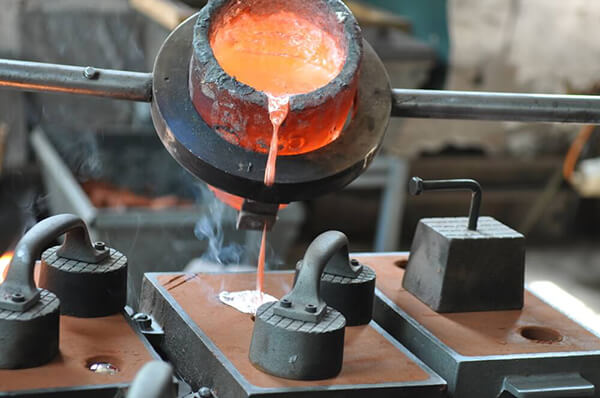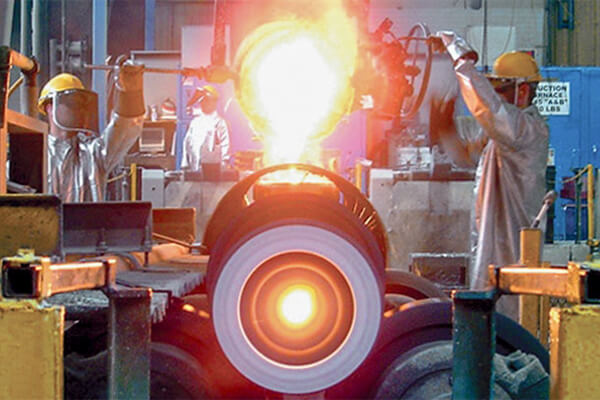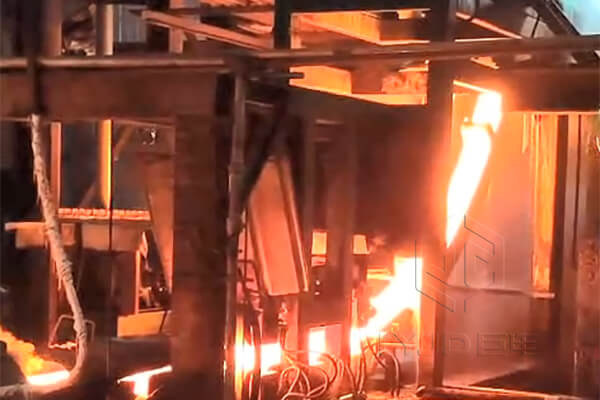Casting is a fundamental process in manufacturing, used to shape molten metal into solid objects. Traditional casting methods, such as sand casting and investment casting, have been widely employed for centuries. However, in recent decades, the continuous caster has emerged as a revolutionary technique with numerous advantages over its traditional counterparts.
In this article, we will delve into the benefits of continuous caster and why it has become the preferred choice for many industries.
Traditional casting methods have been employed for centuries and have played a pivotal role in shaping metal objects. Here are some commonly used traditional casting methods.
Sand casting is one of the oldest and most widely used casting methods. It involves creating a mold by compacting specially prepared sand around a pattern. Once the mold is prepared, molten metal is poured into the cavity, and after solidification, the mold is broken to retrieve the cast object.

Also known as lost-wax casting, investment casting is a precise and intricate casting method. It starts with creating a wax pattern, which is then coated with a ceramic shell. The wax is melted out, leaving behind a hollow cavity. Molten metal is then poured into the cavity, and once solidified, the ceramic shell is broken to reveal the final cast object.

Die casting is a high-pressure method used to produce complex shapes with excellent surface finish. It involves injecting molten metal into a reusable metal mold, called a die, under high pressure. The mold is typically made of steel and can withstand repeated casting cycles.

Centrifugal casting utilizes centrifugal force to distribute molten metal into the desired shape. The mold is rotated at high speeds, and the molten metal is poured into the rotating mold. Centrifugal force helps achieve dense and defect-free casting, particularly for cylindrical or tubular shapes.

Shell molding is a casting technique that uses a resin-coated sand mixture to create a mold. The mold is produced by heating the pattern and placing it in a flask containing a mixture of sand and resin. The resin sets and forms a shell-like structure around the pattern. Once the shell is hardened, it is removed from the pattern, and molten metal is poured into the cavity.

These traditional casting methods have their advantages and limitations, and their selection depends on factors such as the complexity of the object, required precision, material properties, and production volume.
While continuous casting has gained prominence in recent years, traditional methods continue to be used in various industries for their versatility and established practices.
Continuous casting involves the continuous pouring of molten metal into a water-cooled mold, which produces a solidified shell. The shell is then further cooled and solidified before being cut into desired lengths.

Compared with traditional casting methods, continuous casting machines are significantly advanced.
Continuous casting offers significant improvements in terms of efficiency compared to traditional casting methods. By eliminating the need for individual molds and cooling periods between each casting, continuous casting allows for a continuous and uninterrupted production process. This results in higher productivity, reduced cycle times, and increased output.
One of the key advantages of continuous caster is the superior quality of the final products. The continuous process ensures a more uniform and controlled solidification, minimizing the formation of defects such as porosity and inclusions. The absence of mold seams and parting lines also contributes to better surface finish and dimensional accuracy.
Continuous casting can lead to substantial cost savings in various aspects of the manufacturing process. Since the process is automated and requires fewer manual interventions, labor costs can be significantly reduced. Additionally, the elimination of individual molds and the ability to reuse the starting material (e.g., metal ingots) reduce material waste and overall material costs.
Continuous casting is a highly versatile technique that can be applied to a wide range of metals and alloys. Whether it's steel, aluminum, copper, or other metals, continuous caster easily accommodates different materials. This versatility makes it suitable for diverse industries, including automotive, aerospace, construction, and more.
Continuous casting allows for better control over the metallurgical properties of the cast metal. The continuous process enables precise temperature control, resulting in refined grain structure and improved mechanical properties. This is particularly important for critical applications where strength, toughness, and uniformity are paramount.
Compared to traditional casting methods, continuous caster generally consumes less energy. The continuous process eliminates the need for repeated heating and cooling cycles, reducing energy requirements. Moreover, the ability to recycle and reuse excess heat and energy from the casting process further enhances energy efficiency.
Continuous caster is considered a more environmentally friendly option compared to traditional casting methods. The reduction in material waste, energy consumption, and emissions contributes to a lower carbon footprint. Additionally, the use of automated systems and closed-loop cooling systems minimizes water usage and environmental impacts associated with cooling and waste disposal.
Continuous caster has revolutionized the metal casting industry by offering numerous advantages over traditional casting methods. Its improved efficiency, enhanced product quality, cost savings, versatility, and environmental benefits have made it a preferred choice for many manufacturers. As industries continue to evolve, embracing continuous casting can provide a competitive edge by streamlining production, improving product quality, and contributing to sustainable manufacturing practices.
Please send us your request and we reply to you with in 24 hours.
Submit Request